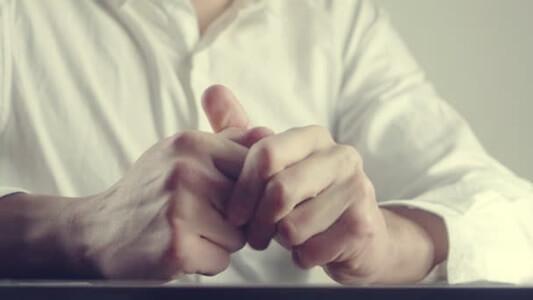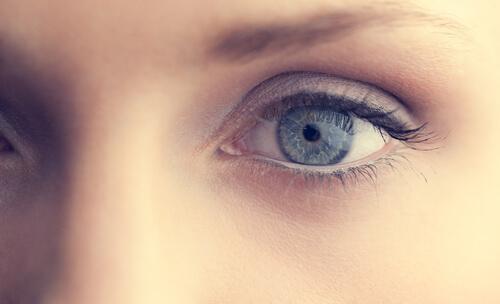The Body Language of Anxiety

All human feelings and emotions show through our posture and expressions in one way or another. Things like joy and fear have a body language, but so do anxiety and depression. Plus, we’re all capable of reading that language, even without realizing it.
This bodily communication sets the tone for our interaction with others, such as spontaneity, tension, indifference, or a specific emotion. What we express through words is just one part of communication. Body language is a deeper part of it.
The body language of anxiety involves a lot of things that show nervousness or discomfort. This is especially evident in our face, the movement of our hands and feet, and our general posture. Today, we’re going to take a more detailed look at this specific form of body language.
“For every thought supported by feeling there is a muscle change. Primary muscle patterns being the biological heritage of man, man’s whole body records his emotional thinking.”
-Mabel Elsworth Todd-

Hands and the body language of anxiety
Our hands are a big part of the body language of anxiety. One thing that will give away this emotional state is when you constantly hide your hands. Leaving your hands in plain view has always been a sign of peace, agreement, and friendship. It shows that you have nothing to hide and aren’t carrying a weapon or something else that can be used to harm others.
We unconsciously leave our hands out when we’re calm. On the other hand, if we’re afraid, mistrustful, or want to express reservations, we hide them. You might put them in your pockets, behind your back, under the table, etc.
Our eyes say a lot
Your eyes are the windows to your soul. If you’re anxious, your whole face and body will be stiff. You’ll also furrow your brow. People may ask if you’re in a bad mood or worried if they see this facial expression. This expression could also make people see you as a serious person.
There’s a particular kind of gaze that shows anxiety. It usually involves a combination of a fixed stare and the occasional glance downwards. The specific ratio of staring and glancing down depends on the person, but these are the two main signs of anxiety.
Remember that anxiety means feeling constantly worried, but often in a vague, undefined way. It also leads to irritation and intolerance with one’s environment. Hence the fixed stare, which conveys aggressiveness, and the downward glancing, which is a sign of introspection.

Other expressions that give away anxiety
Biting is another typical sign of anxiety. One of the most common forms of that is biting your nails. Of course, not everyone does that, but they might bite or chew on other things like pencils, erasers, or anything else they have on hand. Biting your lips is quite common, as is chewing gum. These can all be signs of discomfort.

Another giveaway are constant, compulsive movements. For example, the classic crossed leg and bobbing foot or constantly fidgeting with something in your hand. It could also take the form of a tic, like tapping your feet or fingers. All these movements show your discomfort and restlessness.
Another odd thing about anxiety is that it’s very contagious, especially if the people around you are tense, too. That’s what makes the body language of anxiety more than just something anecdotal. It’s a physical sign of anxiety. It means you have unresolved issues to work through.
All cited sources were thoroughly reviewed by our team to ensure their quality, reliability, currency, and validity. The bibliography of this article was considered reliable and of academic or scientific accuracy.
- Baró, T. (2012). La gran guía del lenguaje no verbal: Cómo aplicarlo en nuestras relaciones para lograr el éxito y la felicidad. Grupo Planeta (GBS).
This text is provided for informational purposes only and does not replace consultation with a professional. If in doubt, consult your specialist.








